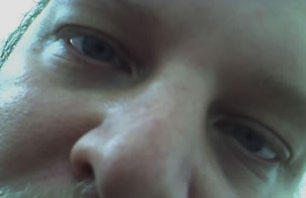The Philippines has very little in the way of history, primarily because governing forces in this country stopped history from happening whenever it had the chance. Essentially, you can know pretty much 95% of Filipino history by just studying the ten years 1895 to 1905, and World War 2. I'll summarize it:

Jose Rizal. His writings
and martyrdom were the
foundation of Filipino
independence.

Andres Bonifacio. He
started the revolution
for Filipino independence
from Spain.

Emilio Aguinaldo. He
finished the revolution
for independence and
was The Philippines
first president.

Manuel Quezon. Presi-
dent of The Philippines
during World War 2, and
first "official" Presi-
dent of The Philippines.

Manuel Roxas. President
of The Philippines at the
end of World War 2, and
first President of a free
and independent
Philippines.

Ferdinand Marcos. Pres-
ident of The Philippines
from 1965 to 1986.
Declared martial law and
ruled by dictat until
removed from power by
the election of the wife
of his murdered rival,
Corazon Aquino.The Philippines was a group of individual village/islands/nations until the Spanish came in the late 1500s. The Spanish used the diversity and differences between the villages/islands/nations to conquer the islands, getting one group of Filipinos to fight and subjugate the next. This went on for the next 300 years whenever discontent arose: Spanish-led Filipinos would put down unrest on islands they were not native to. Several potential revolutionaries rose during Spanish occupation, increasing in number and influence towards the end of the 1800's, but all were caught and killed. Most notable among these martyrs was a man named Rizal, one of the most brilliant Filipinos who ever lived. Read his thanatopsis, "Mi Ultimo Adios", written while waiting for his execution, here. It is one of the greatest pieces of revolutionary writing ever. (I can't read it without misting up.)
Eventually in 1897, one rebel, a fellow named Aguinaldo, was enough of a pain that even though his revolution (actually started by a man named Bonifacio) was beaten back, the Spanish bought him off and exiled him to Hong Kong.
Shortly after this, the Spanish-American war broke out. The American general sent to battle for The Philippines contacted Aguinaldo and told him that now was the time for the Filipinos to fight for independence. Aguinaldo came back and did all the fighting (and was declared the first President of The Philippines), but then at the last minute the Americans came in, staged a (literallyI couldn't find reference online, but according to the book, the Spanish did not want to surrender to the Filipinos, so requested the Americans come along at mid-morning fire their guns for a few minutes (not hitting anything), and the Spanish would surrender to them instead.) fake battle with the Spanish, who then surrendered The Philippines to the Americans.
Aguinaldo and his friends thought The Philippines was free, but the American government had other ideas, and (although a contentious decision in America) claimed The Philippines as a territory. The Filipinos fought the Americans from 1900 to 1901 over this, but it was a rather one-sided war and eventually the Filipinos gave in.
The Americans actually were pretty nice about running The Philippines (according to the book, which was really heavy on the "we love America" stuff), setting up the school system, improving infrastructure, and granting free trade with America. There was also a continual move by America towards Filipino independence from America. They were just about there when World War 2 started. A guy named Quezon was the president of the Commonwealth of The Philippines when Japan invaded just before independence, and he fled to America and governed from there, eventually dying in upstate New York before The Philippines was liberated.
The Japanese came in and tried to pretend they had liberated The Philippines, but nobody believed them, and native insurgencies continued unabated until the Americans returned. (There was an anti-Japanese rebel insurgency that continued for 20 years after the Japanese left that was eventually defeated.)
After the war, America helped rebuild much of the damaged infrastructure in The Philippines, and then President Truman gave it independence on July 4, 1946. Then, a succession of Filipino Presidents, starting with a fellow named Roxas, have added their little bit of progress to agrarian or economic or governmental reform of The Philippines to varying degrees of success.
But it wasn't until the brilliant Ferdinand Marcos came along and drove out all of the corruption from government, cracked down on the criminals, increased support for the arts and literature, and improved the lives of every Filipino (all with the help of his beautiful and brilliant wife), so that the modern shining success of The Philippines we know today could emerge.


4 comments:
I am wondering if, perhaps, there is a more recent book on the history of the Philippines. :)
I'm very certain there is more recent books on Filipino history. I just picked out the book that seemed it would provide the most education upon cursory inspection. I didn't think to check the date of publishing... 1974.
Marcos became a dictator and was ousted through the "people power revolution" or "EDSA revolution" (EDSA 1) in 1986.
Actually Anon, I know quite a bit about modern Filipino history. I was being facetious in my pretending not to know anything about Marcos because the book I read ended with Marcos still in power.
Post a Comment